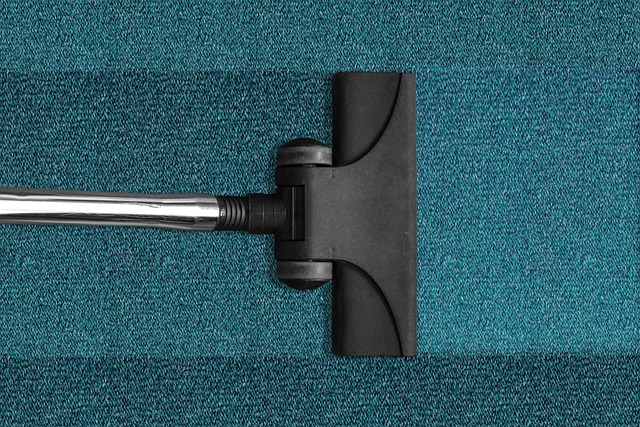Kitchen floor cleaning involves understanding and caring for ceramic or porcelain tiles and grout, which require regular maintenance with appropriate products and techniques to prevent damage and preserve aesthetics. Regular vacuuming, mopping with warm water and mild detergent, prompt grout line discoloration treatment, and deep cleaning every few months are effective practices. Choosing the right cleaning products, whether DIY or professional services, ensures optimal results while maintaining flooring integrity and hygiene in today's kitchens.
Looking to revive your kitchen floor? This comprehensive guide explores everything you need to know about grout and tile cleaning. From understanding the materials and common issues in your kitchen tiles and grout to choosing the right cleaning products, we’ve got you covered. Learn the importance of regular maintenance, effective deep-cleaning methods, DIY tips vs. professional services, stain prevention, and modern restoration techniques for a sparkling, hygienic kitchen floor.
Understanding Kitchen Tile and Grout: Materials and Common Issues

Kitchen floor cleaning begins with understanding the materials and common issues that arise in tiled spaces. Kitchen tiles and grout are often made from ceramic or porcelain, which can withstand high moisture levels and heavy foot traffic. However, this durability comes at a cost. Over time, these surfaces can accumulate dirt, grime, stains, and even mold, especially in areas with poor ventilation. Grout lines, in particular, tend to be susceptible to discoloration due to water damage, food spills, and the constant exposure to harsh cleaning chemicals.
Regular maintenance is key to preventing these issues. Using the right cleaning products and techniques can help preserve the integrity of your kitchen tiles and grout. Avoid aggressive scrubbers or acidic cleaners that could damage the surfaces. Instead, opt for eco-friendly, non-toxic solutions designed specifically for kitchen floor cleaning. Regular vacuuming and mopping with warm water and a mild detergent are effective ways to keep your tiles looking fresh and maintain a clean, inviting kitchen space.
The Importance of Regular Cleaning and Maintenance

Regular cleaning and maintenance are essential aspects of keeping your kitchen floor looking its best and ensuring longevity. Kitchens are high-traffic areas, subject to spills, stains, and grime from various sources like food, grease, and water. Over time, these residues can build up, leading to unsightly discolouration and damage to the grout and tiles. A consistent cleaning routine helps prevent this by removing dirt and debris before they set in, making deep cleaning more manageable.
Moreover, regular maintenance involves addressing issues promptly. For example, repairing broken or loose tiles and grouts promptly prevents further damage and keeps your kitchen floor safe. Sealing the surface periodically can also protect against water penetration, which is particularly important for kitchens where moisture is inevitable. Regular cleaning and maintenance not only enhance the aesthetic appeal of your kitchen floor but also contribute to its structural integrity.
Effective Methods for Deep Cleaning Kitchen Floors

Deep cleaning kitchen floors is an essential part of maintaining a hygienic and aesthetically pleasing space. Start by sweeping or vacuuming to remove any loose debris, ensuring you get into the corners and along the baseboards. This initial step prevents grit from scratching your tiles or grout lines during the cleaning process.
For tile and grout, a mixture of warm water and a mild detergent is effective. Apply the solution with a mop or sponge, focusing on stained areas. Use a soft-bristled brush to scrub stubborn stains in the grout lines. Rinse thoroughly with clean water afterward, ensuring no residue remains. Regular cleaning prevents buildup, making future maintenance easier and keeping your kitchen floor looking fresh.
Choosing the Right Cleaning Products for Tiles and Grout

When it comes to cleaning kitchen floors and grout, selecting the right products is key to achieving optimal results. The market offers a wide array of options, from chemical-laden cleaners to natural, eco-friendly alternatives. For tiles and grout, mild yet effective cleaners are ideal as they won’t strip away protective coatings or damage delicate surfaces. Look for products specifically designed for kitchen areas, considering the high moisture levels and potential exposure to grease and grime.
Natural acids like citric acid or vinegar can be powerful allies in cutting through tough stains without harsh chemicals. Additionally, tile-specific cleaners often come with special formulas that penetrate grout lines, lifting dirt and debris effectively. Always check product labels for suitable applications and follow safety guidelines, ensuring a deep clean that refreshes your kitchen’s aesthetic appeal while maintaining the integrity of its flooring and grout system.
DIY vs. Professional Cleaning Services: What's Best for Your Kitchen?

When it comes to cleaning your kitchen floor tiles and grout, the age-old debate arises: DIY or hire professionals? For some, tackling this task themselves is a satisfying way to save money and take control of their home improvement projects. A DIY approach allows you to choose your own cleaning products, time it according to your schedule, and avoid the potential costs of professional services. Many kitchen floor cleaning solutions are readily available at local stores, and with a bit of research, you can find effective recipes for grout and tile cleaning using common household items like baking soda, vinegar, and lemon juice.
However, professional kitchen floor cleaning services offer unmatched expertise and equipment that can be particularly beneficial for heavily soiled or hard-to-reach areas. Professionals have access to powerful yet safe cleaning agents, high-pressure washers, and specialized tools designed to penetrate and remove stubborn grout buildup and deep-seated dirt without damaging your tiles. If your kitchen floor has not been cleaned in a while, or if you’re dealing with intricate tile patterns and difficult-to-manage grout lines, hiring professionals could be the game-changer that restores your space to its pristine condition.
Tips for Preventing Stains and Keeping Your Kitchen Floor Clean

To keep your kitchen floor clean and prevent stains, regular maintenance is key. Start by choosing stain-resistant grout and tiles that are suitable for high-moisture environments like kitchens. Additionally, sealing the grout after installation can significantly reduce the absorption of oils, sauces, and other residues. Regularly sweeping and mopping with a mild detergent will help remove loose dirt and prevent particles from settling into the grout lines.
Consider using non-abrasive cleaning tools and products to avoid damaging the surface or staining the tiles. Avoid leaving wet surfaces unattended as moisture can lead to mold growth and warping over time. Schedule deep cleaning sessions every few months to thoroughly scrub away any built-up grime, ensuring your kitchen floor remains pristine and free from unsightly stains.
Restoring Old or Discolored Kitchen Tile and Grout

Restoring old or discolored kitchen tiles and grout is an excellent way to revive the look of your space without a complete renovation. Over time, tile and grout can become stained by spills, food particles, and general wear and tear, giving your kitchen a dull or uninviting appearance. Professional cleaning services use specialized tools and chemicals to thoroughly clean and rejuvenate these surfaces.
For kitchen floor cleaning, experts often employ high-pressure washing to remove deep-set dirt and grime, followed by application of grout cleaners that penetrate and dissolve stubborn stains. This process not only brightens the tiles but also ensures that grout lines look fresh and crisp again. By restoring your kitchen’s tile and grout, you can instantly transform its overall aesthetic, creating a clean, vibrant space that is the heart of your home.
Modern Techniques for Achieving a Sparkling, Hygienic Kitchen Floor

In today’s modern kitchens, maintaining a sparkling and hygienic floor is more important than ever. The latest techniques for kitchen floor cleaning focus on efficiency and thorough disinfection, without sacrificing aesthetics. One revolutionary approach involves advanced ultrasonic cleaning technologies that use high-frequency sound waves to break down dirt and grime at a molecular level, leaving surfaces streak-free and bacteria-free.
Additionally, environmentally friendly, non-toxic cleaning agents are gaining popularity for kitchen floor cleaning. These products not only ensure a deep clean but also contribute to a healthier living space. Combining these modern techniques with regular maintenance, such as promptly wiping up spills and scheduling professional grout and tile cleaning services, can transform your kitchen floor into a gleaming centerpiece that reflects both style and cleanliness.
